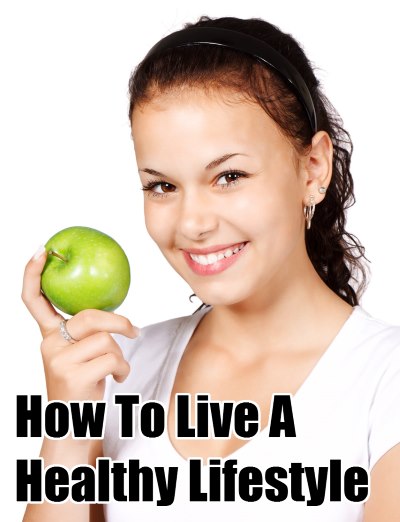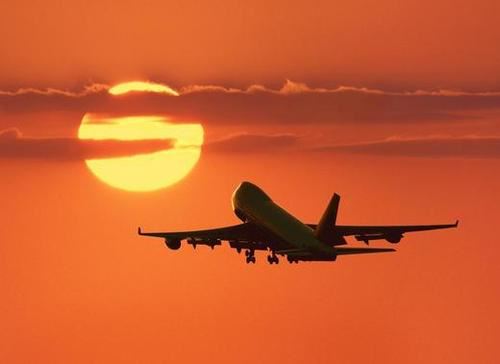Healthier eating is the first step to making sure that you are getting yourself more fit. There a a lot of great advantages to eating better and these include more energy, better concentration and less stomach and digestive problems. Currently, the typical American diet is low in fruits, vegetables, and whole grains, and high in saturated fat, salt, and sugar.
As a result, more Americans than ever are overweight, obese, and at increased risk for chronic diseases such as heart disease, high blood pressure, diabetes, and certain cancers.
Older people are most likely to improve their eating habits, but nutrition is important for people of all ages, says Walter Willet, M.D., chairman of the nutrition department at the Harvard School of Public Health.
“We know that when people have health problems or their friends become ill, these are strong motivators of change,” says Willet. “The more serious the health condition, the more serious the change. We’d rather people made changes early and prevent health problems in the first place.”
So what if you’re feeling trapped by a diet full of fast-food burgers and cookies? You can work your way out slowly but surely. Here are tips to move your eating habits in the right direction.
What Are You Eating Now?
Write down what you eat for a few days to get a good picture of what you’re taking in for healthier eating, suggests Cindy Moore, director of nutrition therapy at the Cleveland Clinic Foundation. “By looking at what you eat and how much you’re eating, you can figure out what adjustments you need to make,” she says.
Sometimes she asks patients to write down what they are feeling. Were you nervous, happy, or sad when you ate five slices of pizza in one sitting?
“The very nature of writing things down in a food diary can help patients make changes,” Moore says. “Someone will tell me, I didn’t want to have to write that I ate nine cookies, so I ate two instead.”
Make Small Changes To Lose Weight

You don’t have to go cold turkey. In the end, you want to achieve a long-term healthy lifestyle. Small changes in healthier eating over time are the most likely to stick.
If you want to eat more vegetables, then try to add one more serving by sneaking it in. Add bits of broccoli to something you already eat like pizza or soup.
If you need more whole grains, add barley, whole wheat pasta, or brown rice to your soup.”
Also, look for healthier versions of what you like to eat. If you like luncheon meat sandwiches, try a reduced-fat version. If you like the convenience of frozen dinners, look for ones with lower sodium. If you love fast-food meals, try a salad as your side dish instead of french fries.
When you think about what you need to get more of, the other things tend to fall into place, If you have some baby carrots with lunch or add a banana to your cereal in the morning, you’re going to feel full longer. You won’t need a food that’s high in sugar or fat an hour later.
Lose Weight With Fruit for Healthier Eating
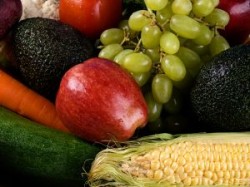
The Dietary Guidelines recommend two cups of fruit per day at the 2,000-calorie reference diet. Fruit intake and recommended amounts of other food groups vary at different calorie levels.
An example of two cups of fruit includes: one small banana, one large orange, and one-fourth cup of dried apricots or peaches.
Ways to incorporate fruit in your diet include adding it to your cereal, eating it as a snack with low-fat yogurt or a low-fat dip, or making a fruit smoothie for dessert by mixing low-fat milk with fresh or frozen fruit such as strawberries or peaches.
Also, your family is more likely to eat fruit if you put it out on the kitchen table.
Eat a variety of fruits–whether fresh, frozen, canned, or dried–rather than fruit juice for most of your fruit choices. “The whole fruit has more fiber, it’s more filling, and it’s naturally sweet,” says Marilyn Tanner, a pediatric dietitian at the Washington University School of Medicine in St. Louis. Still, some juices, such as orange and prune, are a good source of potassium.
Feel Better By Eating More Whole Grains
Like fruits and vegetables, whole grains are a good source of vitamins, minerals, and fiber. The Dietary Guidelines recommend at least three ounces of whole grains per day. One slice of bread, one cup of breakfast cereal, or one-half cup of cooked rice or pasta are each equivalent to about one ounce.
Tanner suggests baked whole-grain corn tortilla chips or whole-grain cereal with low-fat milk as good snacks.
In general, at least half the grains you consume should come from whole grains. For many, but not all, whole grain products, the words “whole” or “whole grain” will appear before the grain ingredient’s name.
The whole grain must be the first ingredient listed in the ingredients list on the food package.
The following are some whole grains:
- whole wheat
- whole oats or oatmeal
- whole-grain corn
- popcorn
- wild rice
- brown rice
- buckwheat
- whole rye
- bulgur or cracked wheat
- whole-grain barley, and millet
Whole-grain foods cannot necessarily be identified by their color or by names such as brown bread, nine-grain bread, hearty grains bread, or mixed grain bread.
Weight loss with Portion Sizes
Understanding the serving size on the Nutrition Facts label is an important healthier eating tip for controlling portions. Someone may have a large bottled drink, assuming it’s one serving, but if you look at the label, it’s actually two servings. And if you consume two servings of a product, you have to multiply all the numbers by two. When the servings go up, so do the calories, fat, sugar, and salt.
If you put more food in front of you, you’ll eat it because it’s there. According to the ADA, an average serving size of meat looks like a deck of cards. An average serving size of pasta or rice is about the size of a tennis ball. Here are some other ways to limit portions: Split a meal or dessert with a friend at a restaurant, get a doggie bag for half of your meal, get in the habit of having one helping, and ask for salad dressing, butter, and sauces on the side so you can control how much you use.
Good Fats Will Help Lose Weight
 Fat provides flavor and makes you feel full. It also provides energy, and essential fatty acids for healthy skin, and helps the body absorb the fat-soluble vitamins A, D, E, and K.
Fat provides flavor and makes you feel full. It also provides energy, and essential fatty acids for healthy skin, and helps the body absorb the fat-soluble vitamins A, D, E, and K.
But fat also has nine calories per gram, compared to four calories per gram in carbohydrates and protein. If you eat too much fat every day, you may get more calories than your body needs, and too many calories can contribute to weight gain.
Too much saturated fat, trans fat, and cholesterol in the diet increases the risk of unhealthy blood cholesterol levels, which may increase the risk of heart disease. “Consumers should lower all three, not just one or the other,” says Barbara Schneeman, Ph.D., director of the Food and Drug Administration’s Office of Nutritional Products, Labeling, and Dietary Supplements.
Saturated fat is found mainly in foods from animals. Major sources of saturated fats are cheese, beef, and milk. Trans fat results when manufacturers add hydrogen to vegetable oil to increase the food’s shelf life and flavor.
Trans fat can be found in vegetable shortenings, some margarines, crackers, cookies, and other snack foods.
Cholesterol is a fat-like substance in foods from animal sources such as meat, poultry, egg yolks, milk, and milk products.
Most of your fats should come from polyunsaturated and monounsaturated fatty acids, such as those that occur in fish, nuts, soybean, corn, canola, olive, and other vegetable oils. This type of fat does not raise the risk of heart disease and may be beneficial when consumed in moderation.
Read Nutrition Labels To Make Better Food Choices
To make healthier eating food choices quickly and easily, compare the Nutrition Facts labels on products. Look at the percent Daily Value (%DV) column. The general rule of thumb is that 5 percent or less of the Daily Value is considered low and 20 percent or more is high.
Keep saturated fat, trans fat, cholesterol, and sodium low as these are really bad for you and avoiding them can be a big win in terms of your health, while keeping fiber, potassium, iron, calcium, and vitamins A and C high. Be sure to look at the serving size and the number of servings per package.
The serving size affects calories, amounts of each nutrient, and the percentage of Daily Value.
The %DV is based on a 2,000-calorie diet, but recommended calorie intake differs for individuals based on age, gender, and activity level. Some people need less than 2,000 calories a day. You can use the %DV as a frame of reference whether or not you consume more or less than 2,000 calories.
The %DV makes it easy to compare the nutrients in each food product to see which ones are higher or lower. When comparing products, just make sure the serving sizes are similar, especially the (grams, milligrams, or ounces) of each product.
Control Calories To Lose More Weight
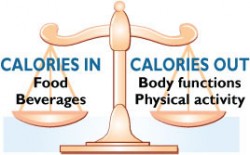
You want to stay within your daily calorie needs, especially if you’re trying to lose weight, says Eric Hentges, Ph.D., director of the USDA Center for Nutrition Policy and Promotion.
“But you also want to get the most nutrients out of the calories, which means picking nutritionally rich foods,” he says.
Children and adults should pay particular attention to getting adequate calcium, potassium, fiber, magnesium, and vitamins A, C, and E.
According to the Dietary Guidelines, there is room for what’s known as a discretionary calorie allowance. This is for when people meet their recommended nutrient intake without using all their calories.
Dr. Hentges compares the idea to a household budget. “You know you have to pay all the bills and then you can use the leftover money for other things,” he says. “The discretionary calorie allowance gives you some flexibility to have foods and beverages with added fats and sugars, but you still want to make sure you’re getting the nutrients you need.”
For example, a 2,000-calorie diet has about 250 discretionary calories, according to the Dietary Guidelines.
Make Choices That Are Lean, Low-fat, or Fat-free
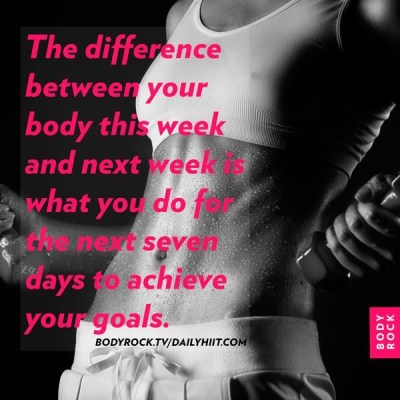 When buying meat, poultry, milk, or milk products, choose versions that are lean, low-fat, or fat-free. Choose lean meats like chicken without the skin and lean beef or pork with the fat trimmed off.
When buying meat, poultry, milk, or milk products, choose versions that are lean, low-fat, or fat-free. Choose lean meats like chicken without the skin and lean beef or pork with the fat trimmed off.
If you frequently drink whole milk, switch to 1 percent milk or skim milk. Many people don’t taste a difference. Some mix whole milk with lower-fat milk for a while so the taste buds can adjust. This doesn’t mean you can never eat or drink the full-fat versions, Schneeman says. “That’s where the discretionary calories come in.”
Other tips to reduce saturated fat include cooking with non-stick sprays and using olive, safflower, or canola oils instead of lard or butter. Eat more fish, which is usually lower in saturated fat than meat.
Bake, grill, and broil food instead of frying it because more fat is absorbed into the food when frying. You could also try more meatless entrees like veggie burgers and add flavor to food with low-fat beans instead of butter.
Eat Your Veggies
The Dietary Guidelines recommend two and one-half cups of vegetables per day if you eat 2,000 calories each day.
Healthier eating consists of adding vegetables to foods such as meatloaf, lasagna, omelettes, stir-fry dishes, and casseroles.

Frozen chopped greens such as spinach, and peas, carrots, and corn are easy to add. Also, add dark leafy green lettuce to sandwiches.
“Involve kids by letting them help pick vegetables in different colors when you’re shopping,” Tanner suggests.
Get a variety of dark green vegetables such as broccoli, spinach, and greens; orange and deep yellow vegetables such as carrots, winter squash, and sweet potatoes; starchy vegetables like corn; legumes, such as dry beans, peas, chickpeas, pinto beans, kidney beans, and tofu; and other vegetables, such as tomatoes and onions.
“Look for ways to make it convenient,” Tanner says. “You can buy salad in a bag.
Or buy a vegetable tray from the grocery store and put it in the refrigerator.
Everything’s already cut up and you can just reach in and eat it throughout the week.”
Lower Sodium and Increase Potassium
Higher salt intake is linked to higher blood pressure, which can raise the risk of stroke, heart disease, and kidney disease. The Dietary Guidelines recommend that people consume less than 2,300 milligrams of sodium per day (approximately one teaspoon of salt).
There are other recommendations for certain populations that tend to be more sensitive to salt. For example, people with high blood pressure, blacks, and middle-aged and older adults should consume no more than 1,500 milligrams of sodium each day.
Most of the sodium people eat comes from processed foods. Use the Nutrition Facts label on food products: 5%DV or less for sodium means the food is low in sodium and 20%DV or more means it’s high.
Compare similar products and choose the option with a lower amount of sodium. Most people won’t notice a taste difference. Consistently consuming lower-salt products will help taste buds adapt, and you will enjoy these foods as much or more than higher-salt options.
Prepare foods with little salt. The DASH (Dietary Approaches to Stop Hypertension) eating plan from the National Heart, Lung, and Blood Institute recommends giving flavor to food with herbs, spices, lemon, lime, vinegar, and salt-free seasoning blends.
Consult with your physician before using salt substitutes because their main ingredient, potassium chloride, can be harmful to some people with certain medical conditions.
Also, increase potassium-rich foods such as sweet potatoes, orange juice, bananas, spinach, winter squash, cantaloupe, and tomato puree. Potassium counteracts some of sodium’s effect on blood pressure.
Lower Sugar Intake Will Help You Lose Weight

The Dietary Guidelines recommend choosing and preparing food and beverages with little added sugars. Added sugars are sugars and syrups added to foods and beverages in processing or preparation, not the naturally occurring sugars in fruits or milk.
Major sources of added sugars in the American diet include regular soft drinks, candy, cake, cookies, pies, and fruit drinks. In the ingredients list on food products, sugar may be listed as brown sugar, corn syrup, glucose, sucrose, honey, or molasses.
Be sure to check the sugar in low-fat and fat-free products, which sometimes contain a lot of sugar, Tanner says.
Instead of drinking regular soda and sugary fruit drinks, try diet soda, low-fat or fat-free milk, water, flavored water, or 100 percent fruit juice. Healthier eating would mean more water tan juices anyway
For snacks and desserts, try fruit. People are often pleasantly surprised that fruit is great for satisfying a sweet tooth. And if ice cream is calling your name, don’t have it in the freezer. Make it harder to get by having to go out for it. Then it can be an occasional treat in your new healthier eating lifestyle.

